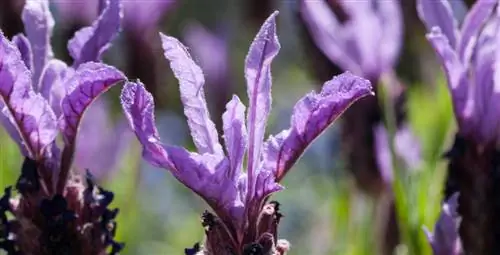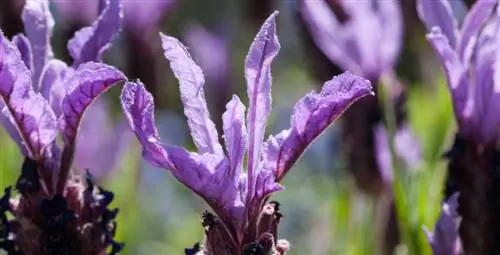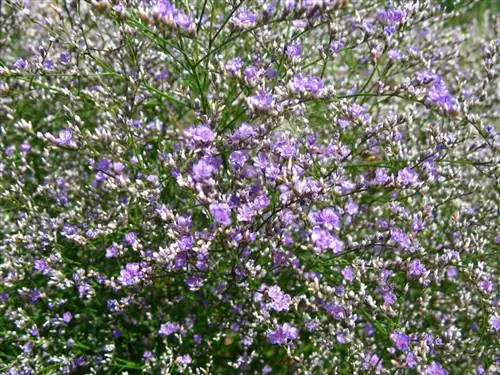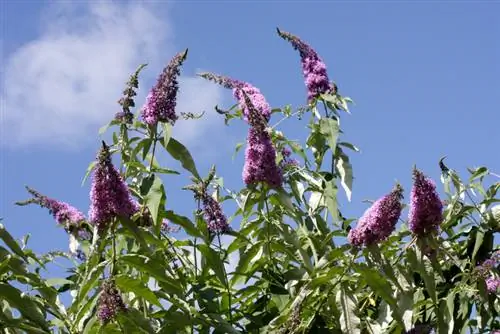- Author admin [email protected].
- Public 2023-12-16 16:46.
- Last modified 2025-01-23 11:20.
The numerous, intensely scented flowers of lavender are welcome food for numerous butterflies, bees and bumblebees. Due to its characteristic flower shape, the relatively small crested lavender is often referred to as butterfly lavender. This lavender variety differs considerably from its sisters in terms of location and care.

How do you properly care for butterfly lavender?
Caring for butterfly lavender includes sufficient sun, well-drained soil, protection from frost and waterlogging and no calcareous soil or tap water. In addition, spent parts should be removed to encourage a second flowering period.
Optimal for pot and balcony planting
The butterfly lavender only grows between 25 and 40 centimeters high on average and is therefore the perfect candidate for pot culture. The beautifully flowering tiny plant can also be kept in balcony boxes that are sufficiently deep and have drainage. This type of lavender also needs a lot of sun and must never be too wet, otherwise the roots will begin to rot. This is particularly important when cultivating in a balcony box, as excess water naturally cannot drain away. Therefore, you should only plant the butterfly lavender there alone or with other plants that are similar in terms of care. Plants with high nutrient and water requirements, on the other hand, are unsuitable for socialization.
Butterfly lavender is not hardy
In contrast to real lavender, which is often planted in gardens, butterfly lavender has difficulty withstanding drops in temperature and especially winter cold. The plant is not winter hardy and should therefore not be overwintered outdoors, but rather indoors at relatively cool but frost-free temperatures. If the weather is very bad - sudden cold snaps or heavy downpours in summer - you can also put it in the room for a short time.
Butterfly lavender has different needs
Of all types of lavender, crested or butterfly lavender has the longest blooming time. If the weather conditions are right, this variety begins to bloom in May and continues until August. However, if possible, you should only put the butterfly lavender outside when cold snaps - especially night frosts - are no longer expected. Cut off any dead flowers early to encourage the plant to bloom a second time. When it comes to nutrient supply, there is a big difference to the other types of lavender: While these should be supplied with lime once a year if possible, butterfly lavender must under no circumstances be placed in calcareous soil. Therefore, you should not water it with tap water, as this also contains more or less lime depending on the region.
Tips & Tricks
With lavender, you can be stingy with fertilizer; because the more the plants are fertilized, the less they bloom. You can sometimes read care tips that recommend fertilizing lavender every two weeks. Please do not heed these tips.






